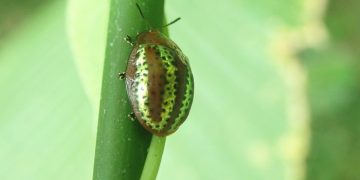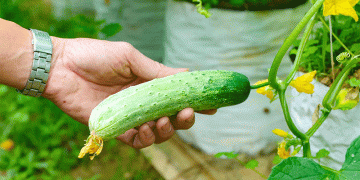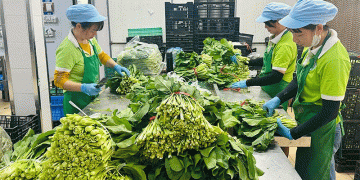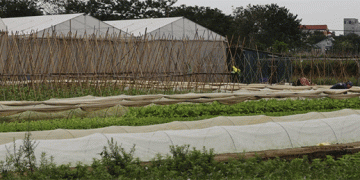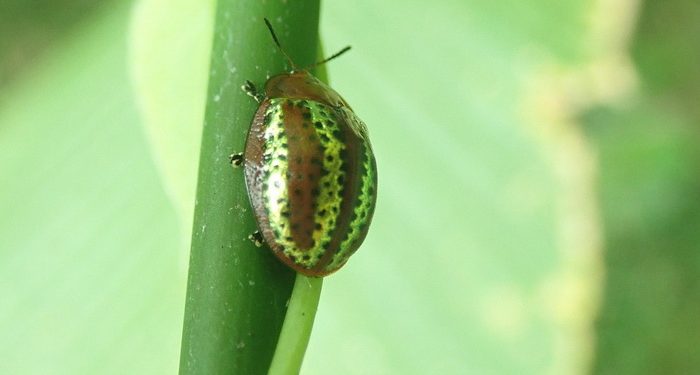…and beetles help the fungus infect plants.
The shield beetle Chelymorpha alternans.
Mold fungus fusarium acrosporum is one of the most common phytopathogens that can cause a lot of trouble to agriculture. In relation to the hosts, it is very promiscuous, that is, it parasitizes a variety of species. However, it should be clarified here that fusarium acrosporum has a lot of different strains, which sometimes specialize in a very narrow spectrum of hosts; moreover, there are quite harmless and even useful ones among them. But in general, the mushroom is considered quite harmful. By the way, it is not limited to plants: some strains affect animals, up to humans.
Therefore, it could be expected that for the shield beetle Chelymorpha alternans, on which fusarium also grows, there is only one harm from it. But everything turned out to be a little different. In an article in Current Biology, the staff of the Max Planck Society Institute of Biology write that the fungus accompanies the beetle all its life, but it becomes especially numerous when the beetle larva turns into a pupa — the fungus grows a thousand times more intensively on it, covering the pupa with a waxy white coating. At the same time, nothing happens to the pupa, after six days an adult beetle appears from it.
About science
The researchers suggested that the fungal plaque protects the immobile pupa from predators — for example, from ants. For the experiment, we took almost a hundred pupae and laid them out in special cages in the undergrowth in the jungle of Panama. Some of the pupae were cleaned of fungal plaque, and the cells were closed so that no one could get into them. All these pupae turned into beetles at one time, that is, the cleaning of the fungus itself did not hurt them.
Another part of the pupae, having been cleaned of plaque, was put in cages where ants could penetrate — only 43% of them survived on the fourth day. And finally, a third of the pupae were not cleaned from anything and were also put in cages open to ants — 88% of these survived. That is, the fungus doubled the survival rate of Chelymorpha alternans pupae. Exactly how fusarium repels ants is not yet clear, although it is known that there are genes in the genome of the fungus that help to obtain substances with insecticidal properties.
At the same time, the beetle pays the fungus by helping it infect plants. Chelymorpha alternans beetles feed on sweet potatoes, and if a beetle with a fungus comes to the sweet potato, the plant is more likely to be affected by a fungal infection. When ten plants were left alone with two beetles that had just emerged from the “fungal” pupae, by the end of the month almost 80% of the sweet potato foliage was affected by the fungus.
However, the question arises, why would a beetle spoil its food by spreading fungus on it. In fact, here you need to accurately compare all the pros and cons. For a beetle, the danger of being eaten at the pupal stage can be much more serious than the danger of being left without sweet potato leaves due to protective mold; after all, the beetle can easily move to a new sweet potato that is not yet so badly affected by the fungus. In addition, it may be easier for a beetle to eat a moldy plant: after all, it feels the damage when it is eaten, and turns on the protective mechanisms, but if the plant is weakened by mold fusarium, it will no longer be able to defend itself too vigorously from the beetle.
A source: https://www.nkj.ru
